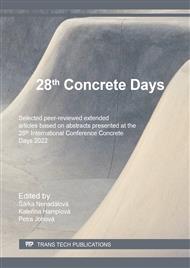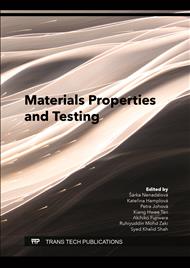p.165
p.173
p.179
p.185
p.193
p.201
p.209
p.217
p.223
Study of the Influence of the Opening Size and the Type of Reinforcement on the Behavior of the Reinforced Concrete Infill Shear Walls
Abstract:
The subject of the article is a comparison of behavior of a precast reinforced concrete infill shear walls with an opening with different types of reinforcement. These are the walls that can ensure stiffness of the frame structure against horizontal load. Studied walls with an opening represent cases of how the wall can be reinforced prior to the implementation of an additional opening. The influence of the so called “sleeping reinforcement” is studied. This is a reinforcement that would take effect only after the additional opening has been made. The wall elements are first subjected to experimental verification. Subsequently, the results from the experiments are verified by non-linear models, which represent the individual elements during the experiment. Based on these models, a parametric study is performed, where the influence of an opening size in these infill shear walls is studied on their load - bearing capacity and stiffness.
Info:
Periodical:
Pages:
209-215
Citation:
Online since:
August 2022
Authors:
Price:
Сopyright:
© 2022 Trans Tech Publications Ltd. All Rights Reserved
Share:
Citation:



